When Italy’s Tax Man Came Calling, These Small-Bore Exotics Were the Answer
As Benjamin Franklin famously wrote, “in this world, nothing is certain except death and taxes.” But that’s never stopped human ingenuity from trying to cheat them both, with varying degrees of success.
Since levies on cars and the fuel that goes in them are difficult to evade, they have always constituted a significant source of tax revenue for the Italian government. Yet, in the aftermath of the 1973 oil crisis, when the government subjected the purchase of new cars equipped with engines over two liters of displacement to a 38 percent value-added tax (VAT), even the country’s most prestigious automobile brands felt compelled to adapt.
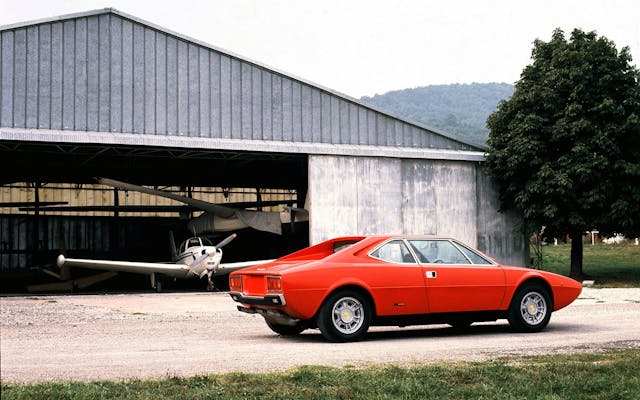
The story of Italy’s sub-2000-cc exotics begins at the 1974 Turin motor show, with the Dino 208 GT4. Nearly identical inside and out to the 308 GT4 presented a year prior, the Dino 208 GT4 was equipped with a 1990.64-cc V-8 created by reducing the 308 engine’s bore diameter from 81 mm to 66.8 mm. Fed by four Weber 34 DCNF carburetors, the 208 GT4’s engine was rated at 170 hp at a heady 7200 rpm. While that was an impressive figure for a 2-liter engine in the mid 1970s, performance inevitably suffered compared to the full-fat 308, which, in European specification, could count on 255 hp. Nonetheless, the 208 GT4 sold well enough by Ferrari standards, with 840 cars built until 1980.
The same can’t be said about the Lamborghini Urraco P200. With only 66 examples leaving the Sant’Agata factory between 1974 and 1979, the least powerful Lamborghini ever made is also among the rarest. Like the Dino 208 GT4, the Urraco P200 was presented in late ’74 at the Turin motor show and looked nearly identical to the larger-displacement model that spawned it. Lamborghini rated the P200’s 1994-cc V-8 at a generous 182 hp, which placed it conveniently above the competition from Maranello but didn’t prove enough to convince the Raging Bull’s customers.
While its crosstown rivals were quick to present their downsized offerings, Maserati’s answer to the oil crisis didn’t arrive until 1977, because the company nearly didn’t survive it. However, one of the first new models to see the light after Alejandro De Tomaso took control of Maserati in ’76 was the Merak 2000 GT. Like its peers from Sant’Agata and Maranello, this version of the Merak was available solely on the Italian market and was equipped with a 1999-cc, 170-hp version of the existing “C114” V-6 engine. The Merak 2000 GT did little for Maserati’s fortunes, however, as production ended in 1982 after just 190 cars had been built.
But if Lamborghini and Maserati found little success with their downsized exotics, by the early 1980s things were about to get a lot more exciting at the bottom of the Ferrari range.
When thinking about turbocharged Ferraris, one’s mind naturally goes to the apex predators from the company’s 1980s lineup: the 288 GTO and the F40. But few people remember that the story of Ferrari turbo engines actually began at the opposite end of the company’s lineup, and for good reason. Because if ever there were Ferraris in need forced induction, they were the 208 GTB and GTS.

When production of the Bertone-designed GT4 ended in 1980, Ferrari began installing the 1990-cc V-8 from the 208 GT4 under the pretty Pininfarina lines of the 308 GTB and GTS. From the outside, the only way to tell a 208 apart from a 308 was the badge on the back. But once you pressed the loud pedal, there was no mistaking one for the other. Ferrari quoted a power output for the 208 GTB and GTS of just 155 hp, down 15 ponies from the GT4’s already depleted stable. These naturally aspirated 208s only lasted two years in production and, like the Dino 208 GT4 before them, were only available to Italian customers. Which is just as well, given that Thomas Magnum would have had a hard time running away from trouble in a 208 GTS. Nonetheless, between 1980 and ’82, Ferrari managed to shift 160 208 GTBs and 140 208 GTSs.
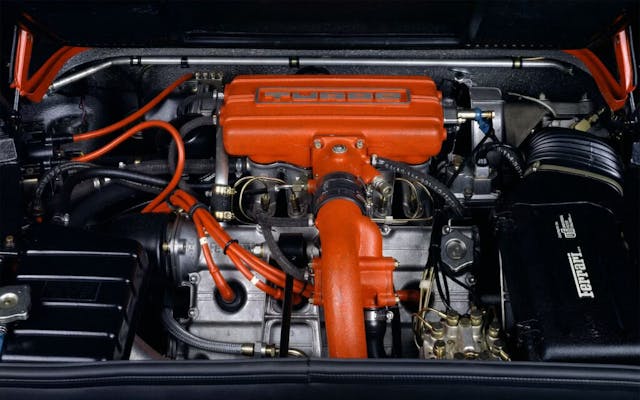
Still, something had to be done to stop the 208’s customers from being embarrassed at the stoplight by lesser machinery, so, as they often do, Ferrari’s engineers drew inspiration from F1. The 126 C2 with its twin KKK turbos won the F1 Constructors’ Championship for the Scuderia in 1982, and the same year’s Turin show saw the debut of the first turbocharged Ferrari you could drive without a helmet: the 208 GTB Turbo.
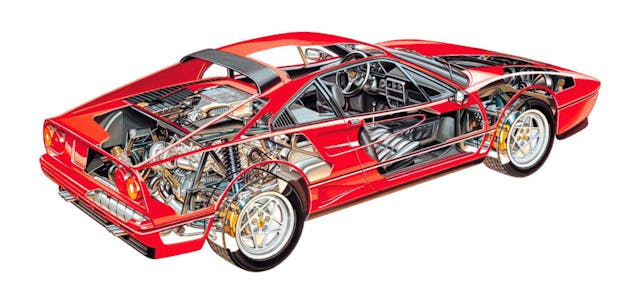
The extra heat in the engine compartment of the 208 GTB Turbo forced Pininfarina to make a few subtle exterior modifications that set the model apart from its naturally aspirated siblings. At the front, there were new cooling slots in the lower front spoiler to channel extra airflow into the radiator, exiting through new grille slots on the hood. At the back, the engine cover featured additional vents, while the rear bumper was split into two sections to make way for a cooling duct in the center. On the sides, additional NACA air intakes were added low down behind the doors, displacing the Pininfarina badges from their usual spot.
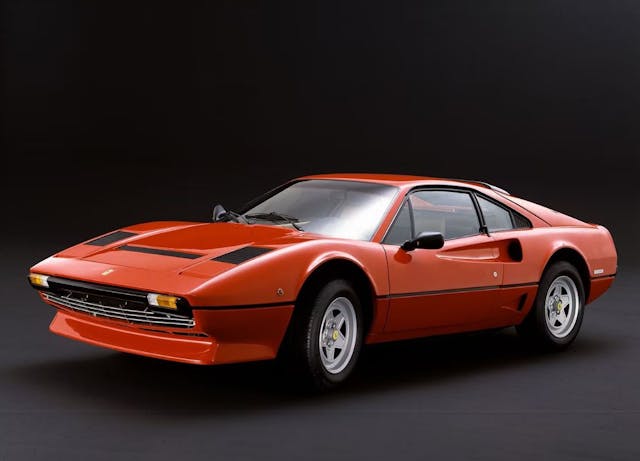
But if the exterior design changes were subtle, those made under the engine cover completely transformed the 208 from a somewhat emasculated entry-level model into a genuine performance car. Thanks to a KKK K26 turbocharger, Ferrari’s 1990-cc V-8 now boasted power (220 hp at 7000 rpm) and torque (177 lb-ft at 4800 rpm) ratings not far off those of the newly launched 308 Quattrovalvole. The open GTS model became available in 1983, and a total of 687 of the 208 Turbos were built until 1985.
Following the launch of the 328, Ferrari upgraded the two-liter cars to the new model’s softened exterior design and improved cabin ergonomics. The “208” moniker was dropped, with the company now referring to these models just as the “GTB Turbo” and “GTS Turbo.” However, the operation wasn’t merely cosmetic, as the engine received a new water-cooled IHI turbocharger and an air-to-air intercooler. With a little over 15 psi of boost pressure, the revised 1990-cc turbo V-8 produced an impressive 254 hp and 242 lb-ft of torque. Yet, like their predecessors, there was little to distinguish the turbo cars from a regular 328. Aside from the NACA duct on the sides, the turbo cars sported a taller engine cover to make room for the intercooler and additional ventilation slots on the rear bumper.

These last models were also the most successful in sales terms, with 1136 units sold until production ceased in 1989, putting an end to a brief but intriguing chapter of automobile history. Born out of sheer expediency during an era of economic crisis, by the end of the 1980s, Ferrari’s sub-2000-cc “Italian specials” had matured into serious performers that neither the company nor its customers needed to make any excuses for.
The Italian government finally repealed its higher tax regime on over-2000-cc engines in 1994, but Ferrari had already moved on by then. After a long time of being undervalued compared to their large-displacement brethren, prices for these sub-2000-cc exotics on the classic Italian car market have now firmed up considerably, and quite a few examples have since found their way across the country’s borders.
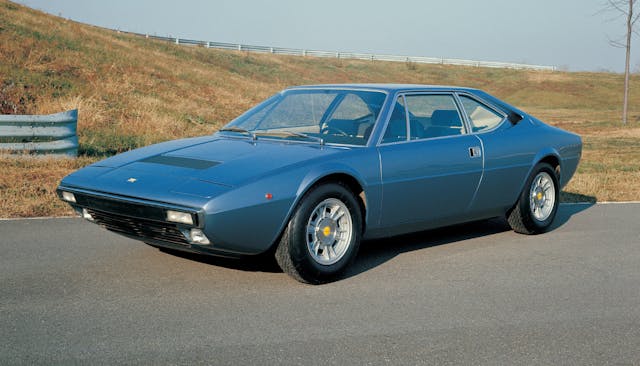
***
Matteo Licata received his degree in Transportation Design from Turin’s IED (Istituto Europeo di Design) in 2006. He worked as an automobile designer for about a decade, including a stint in the then-Fiat Group’s Turin design studio, during which his proposal for the interior of the 2010–20 Alfa Romeo Giulietta was selected for production. He next joined Changan’s European design studio in Turin and then EDAG in Barcelona, Spain. Licata currently teaches automobile design history to the Transportation Design bachelor students of IAAD (Istituto di Arte Applicata e Design) in Turin.
Check out the Hagerty Media homepage so you don’t miss a single story, or better yet, bookmark it. To get our best stories delivered right to your inbox, subscribe to our newsletters.
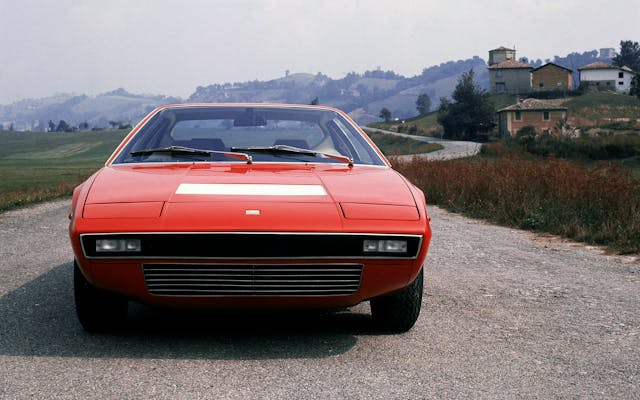
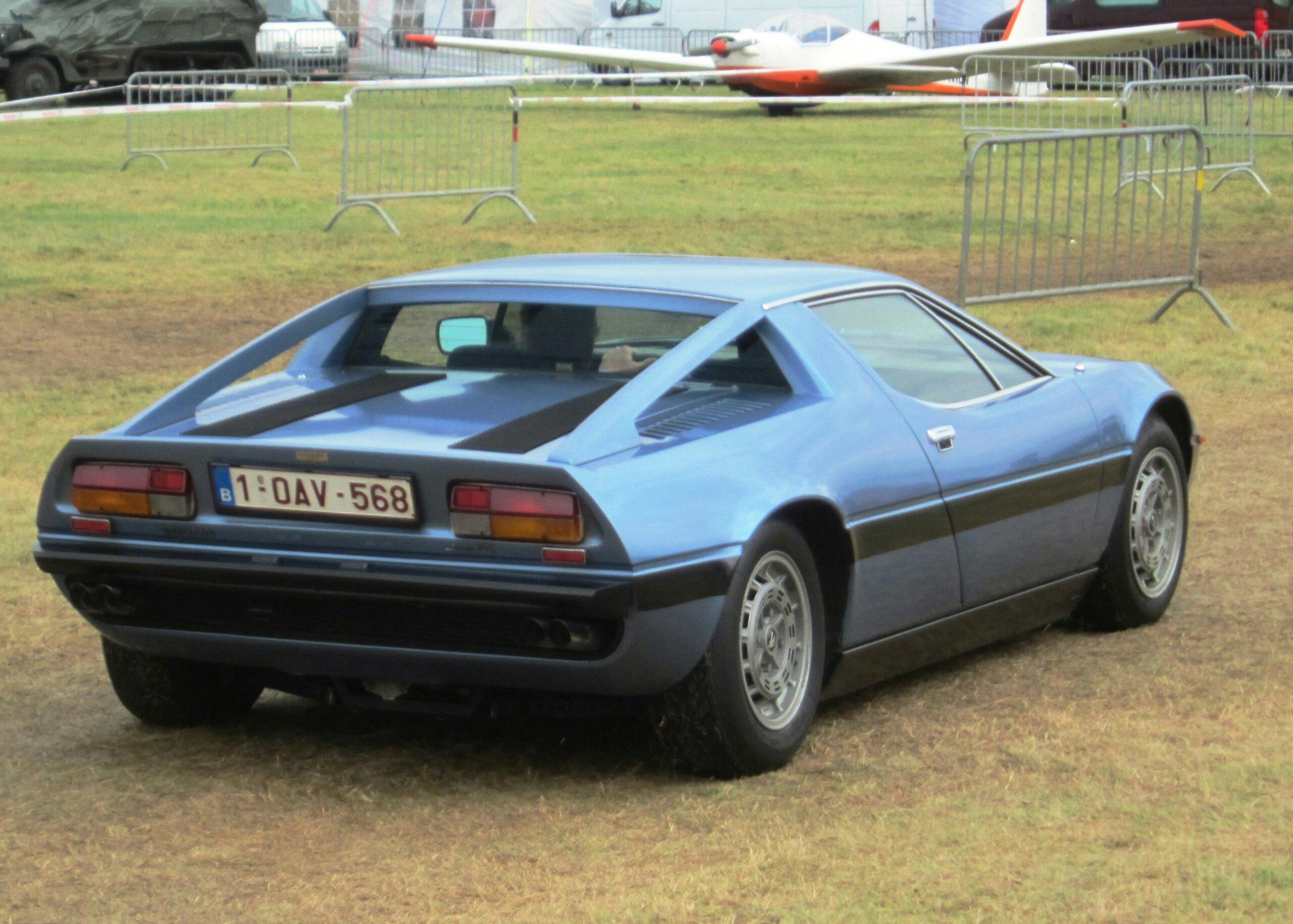
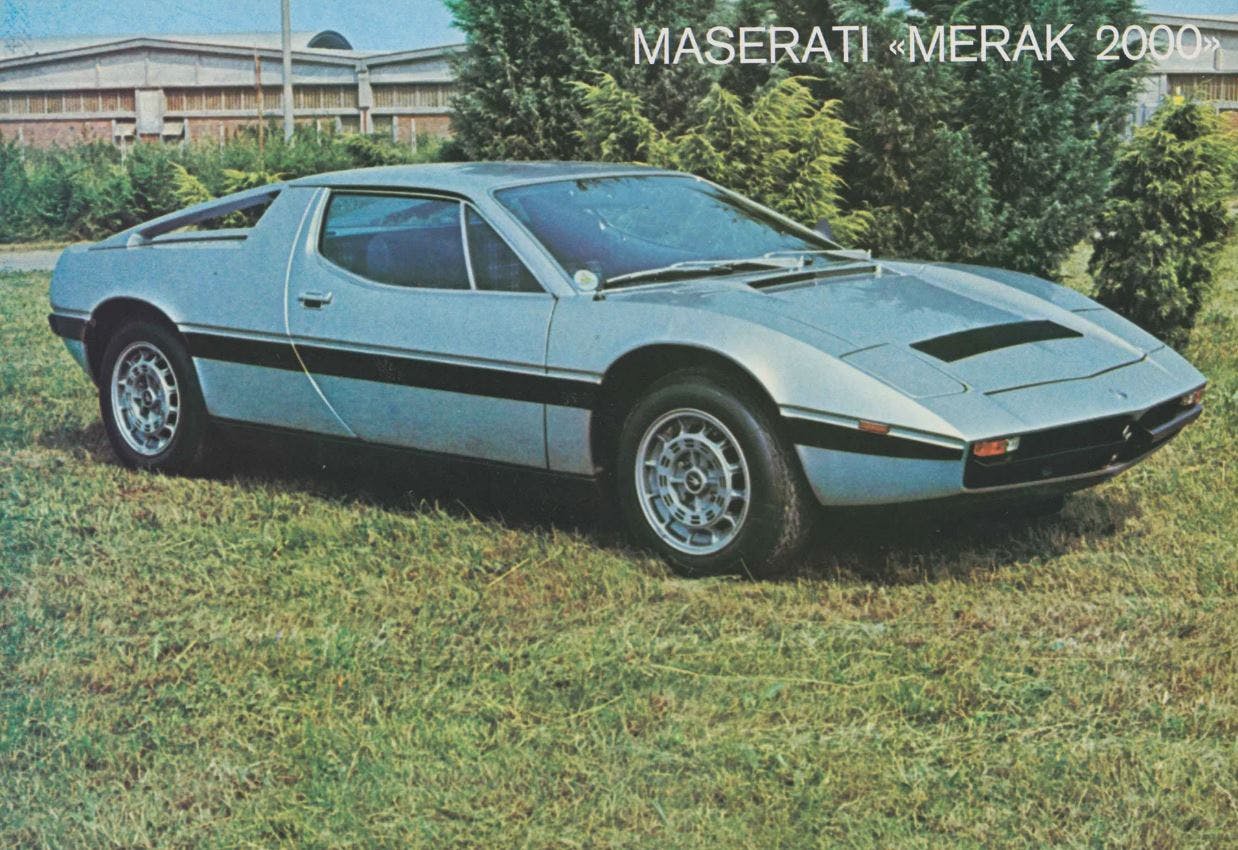
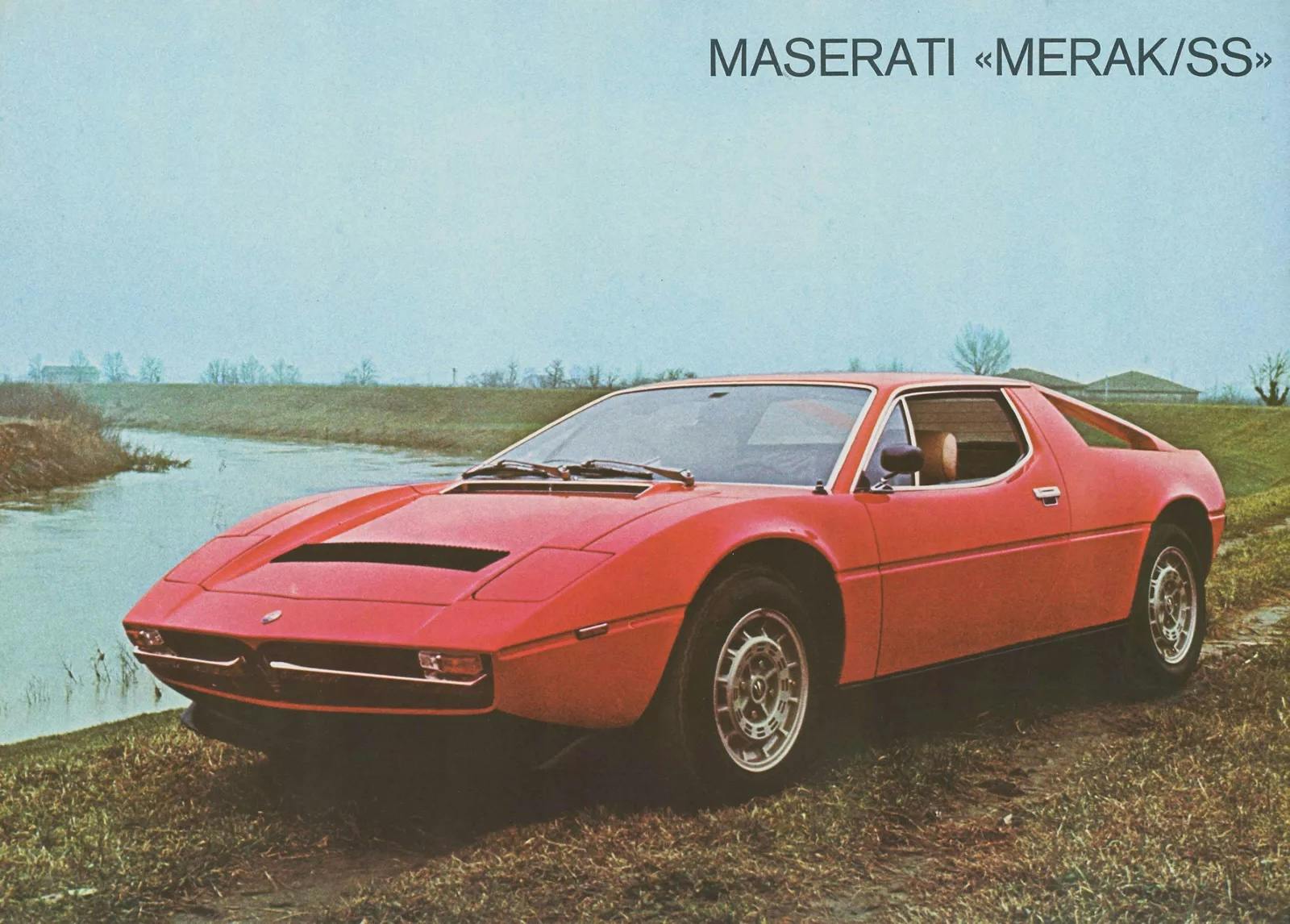
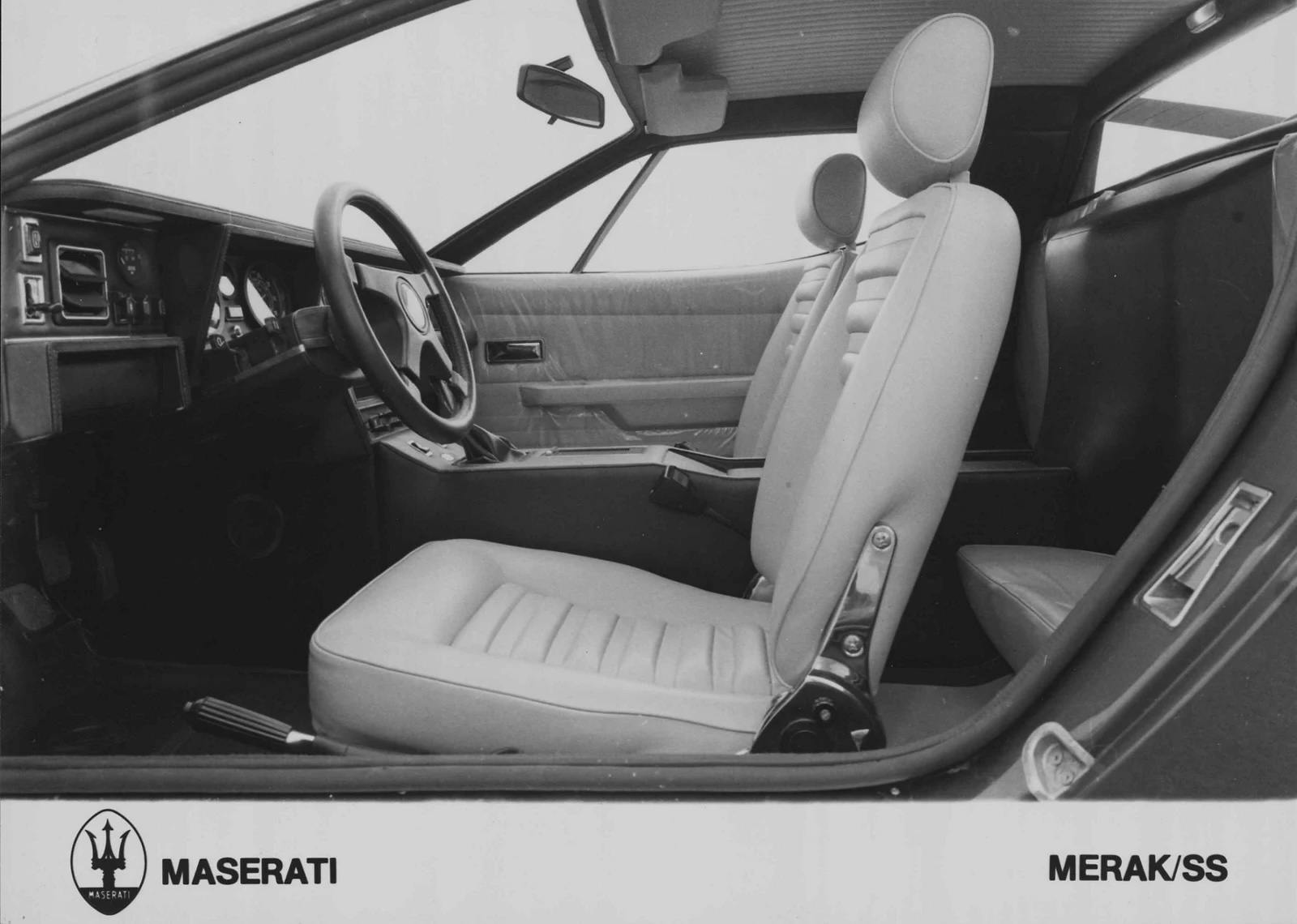
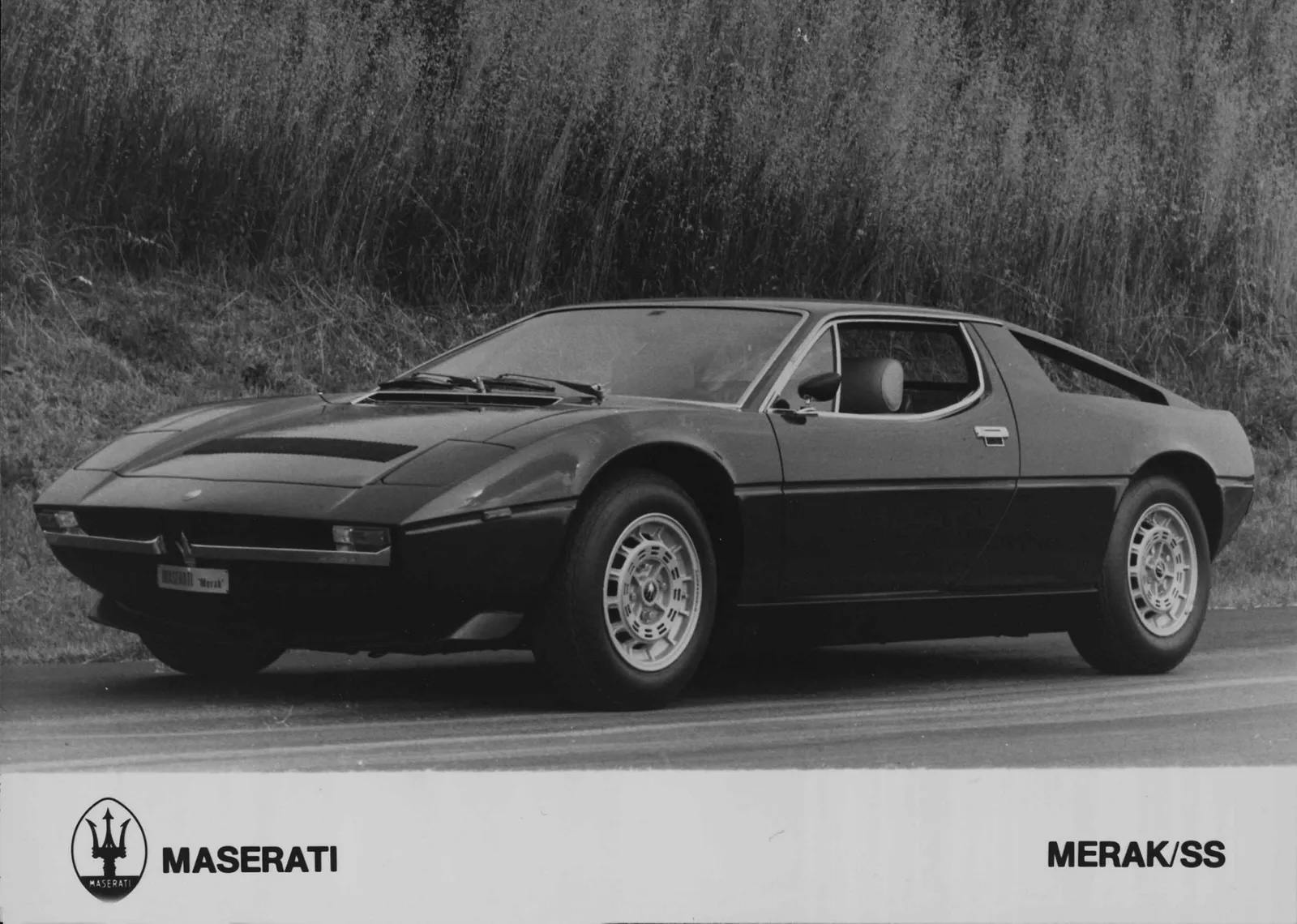
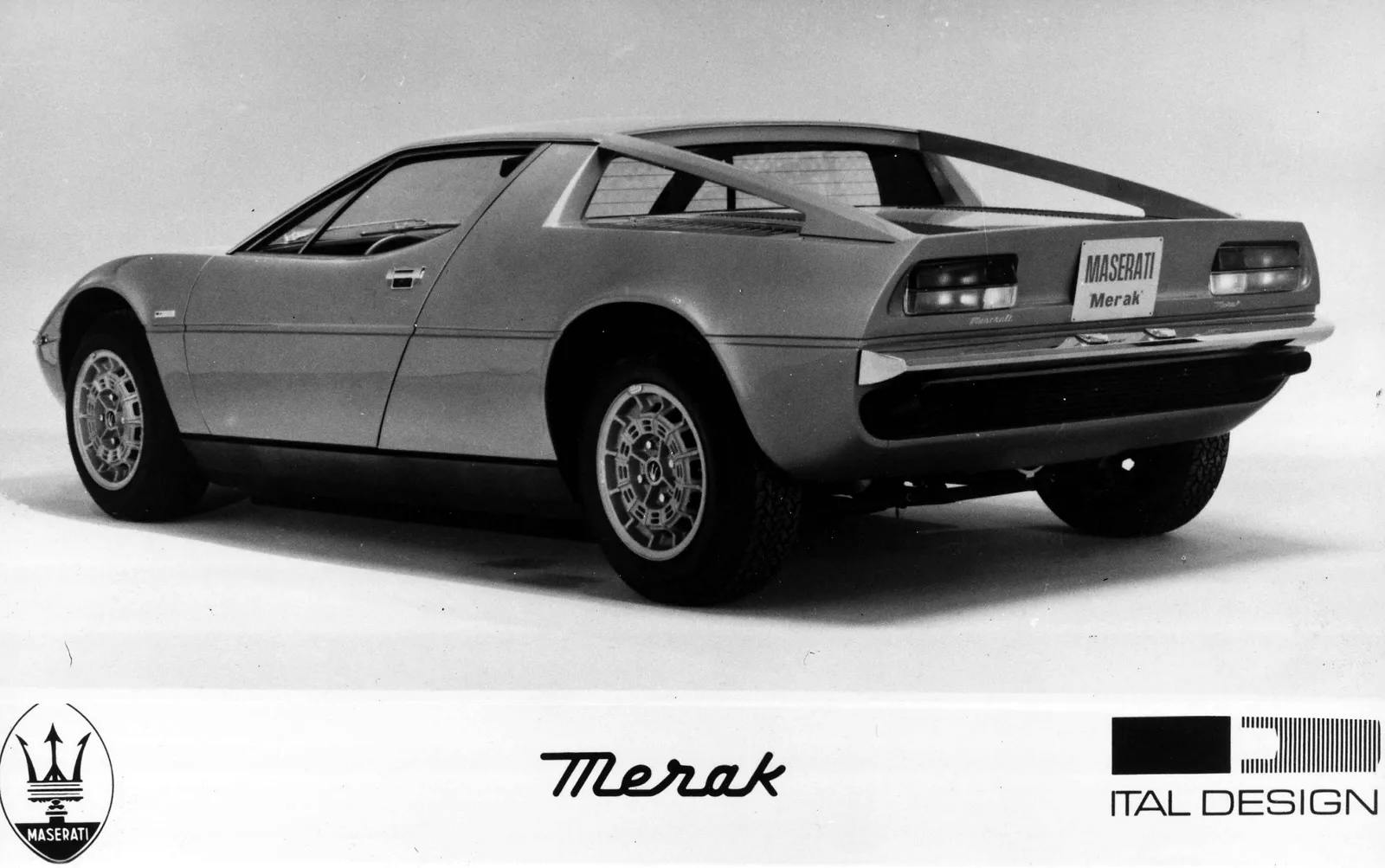


I have not known much about these sub 2.0 Liter turbo motors. Petty cool.